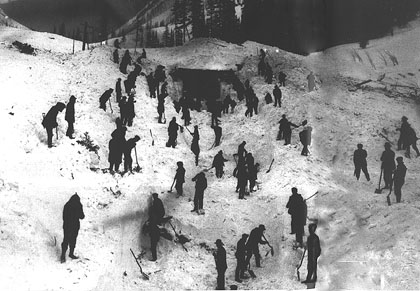Pingo
A pingo is an ice-cored hill typically conical in shape, growing and persisting only in PERMAFROST. The word "pingo" is of Inuit origin and was first used in the English-language literature by the botanist Alf E. PORSILD (1938) to describe conical ice-cored mounds which occurred in the Mackenzie Delta. In the Russian language, the equivalent term is bulganniakh, of Yakut origin.
Pingos range from a few metres to several tens of metres in height. The greatest concentration (about 1450), and some of the largest in the world, occur in the Mackenzie Delta region. Two of the best known are Ibyuk and Aklisuktuk ("the one that is growing"), first sketched by the explorer John RICHARDSON in 1848. Ibyuk is 50 m high and about 1000 years old, and is the only designated Canadian landmark (seeNATIONAL PARKS). Pingos also occur in central Yukon and on several High Arctic islands (notably BANKS ISLAND and BYLOT). Pingos are described from Alaska, Greenland and Siberia as well.
Pingos form by the freezing of water, which moves towards the surface under either hydraulic or hydrostatic pressure. Open-system pingos form when groundwater moves from a distant, elevated source under hydraulic pressure. They typically occur on lower valley side slopes and on alluvial fan surfaces. Closed-system pingos, as in the Mackenzie Delta region, typically form in recently drained lake basins or old drainage channels, and are the result of hydrostatic pressures that develop as unfrozen saturated sediment progressively freezes. Field studies by J. Ross Mackay on closed-system pingos in the Mackenzie Delta indicate that pore water expulsion and the accumulation of subpingo water lenses can lead to rapid pingo growth (0.1-0.5 m/year), especially in the initial stages.

 Share on Facebook
Share on Facebook Share on X
Share on X Share by Email
Share by Email Share on Google Classroom
Share on Google Classroom


